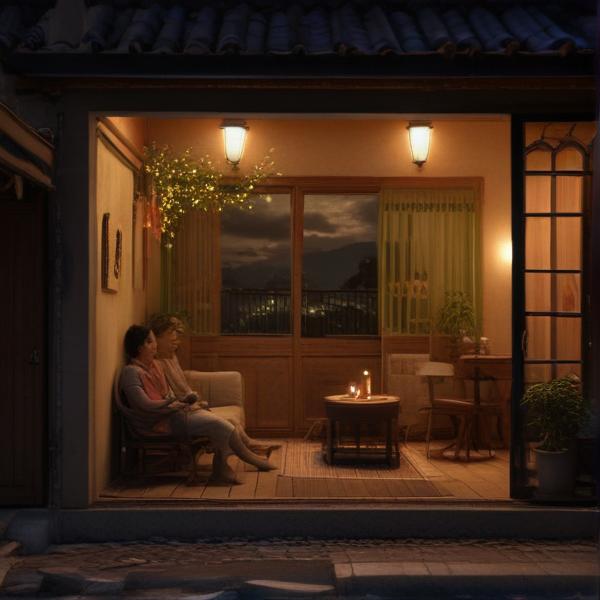基本信息 (Basic Information)
含义与用法 (Meanings & Usage)
中文核心释义 (Core Chinese Meaning): 夜晚,晚上的时间,天黑以后到天亮以前的时段。
英文核心释义 (Core English Meaning): night; nighttime; the period of time from dusk till dawn.
象形意义 / 为何这么写 (Pictographic Meaning / Writing Rationale)
文言文释义 (Classical Chinese Meaning)
与现代意义相近,指夜晚,有时用作时辰单位或表达夜间的时间流逝。Similar to modern meaning; refers to nighttime and sometimes used as a unit of time or to describe the passage of night in classical texts.
深入学习 (In-depth Study)
字源故事 (Origin Story)
字形演变 (Character Evolution)
常用词语和例句 (Common Words & Examples)
夜晚 (night; nighttime)
夜晚的城市非常美丽。
Eng: The city is very beautiful at night.
深夜 (late at night; midnight hours)
他常常在深夜学习。
Eng: He often studies late at night.
夜空 (night sky)
夜空中有很多星星。
Eng: There are many stars in the night sky.
相关成语 (Related Idioms)
夜以继日
Meaning: day and night; around the clock
多语言翻译 (核心释义) (Translations (Core Meaning))
- French: nuit
- German: Nacht
- Spanish: noche
- Italian: notte
- Portuguese: noite
- Russian: ночь
- Arabic: ليل
- Persian: شب
- Dutch: nacht
- Polish: noc
- Vietnamese: đêm
- Ukrainian: ніч
视频学习资源 (Video Learning Resources)
通过以下链接在热门视频网站搜索 "夜" 的更多讲解:
Search for more explanations of "夜" on popular video sites:
- 在 Bilibili.com 搜索 "夜 字源 说文解字" (Search on Bilibili)
- 在 YouTube.com 搜索 "Ye character origin etymology" (Search on YouTube)
网络参考 (Web References for "夜") ()
网络内容摘要 (Web Content Summary):
夜的核心含义是“夜晚”或“黑夜”,即指从傍晚到天亮这段时间。 夜 mainly means "night" or "the period from evening to dawn".
在甲骨文中,目前尚未发现“夜”字,而在金文记录中,其字形像正面站着的人,据说右臂下方的一点表示“腋”下,反映古文字构形的有趣之处。 In oracle bone script, the character "夜" has not been found so far. In bronze inscriptions, the character resembles a person standing frontally, with a dot under the right arm suggesting the "armpit", which is an interesting aspect of early character form.
- 常用词和搭配:“夜晚(yèwǎn, night)”、“今夜(jīnyè, tonight)”、“夜夜(yèyè, every night)”、“夜色(yèsè, night scene)”等。 Common words: "夜晚" (night), "今夜" (tonight), "夜夜" (every night), "夜色" (night scenery).
- 常见成语:“夜深人静(yè shēn rén jìng, deep night and quietness)”、“挑灯夜读(tiǎo dēng yè dú, study at night by lamplight)”。 Idioms: "夜深人静" (deep night, all is quiet), "挑灯夜读" (study at night by the lamp).
- 易混淆点:“夜”易和“亦”混淆(两者形似,但含义不同; “夜”指时间,“亦”意为“也”)。 Potential confusion: "夜" (night) is sometimes mistaken for "亦" (also), as their forms are similar but their meanings are different.
文化方面,“夜”常常出现在古诗中,如“夜来风雨声,花落知多少”。 Culturally, "夜" often appears in Chinese poetry, such as the line "Last night the sound of wind and rain, how many blossoms have fallen?"
总体来说,资料较为有限,尚无甲骨文直接例证,但通过金文分析和文化用法可帮助理解此字。 Overall, information is limited: there are no oracle bone examples, but bronze script and cultural usage help in understanding the character.
【夜】的甲骨文金文篆文字形演变含义 - 甲骨文研究网 甲骨文密码字典 在线甲骨文字典研究 - 甲骨文研究网 甲骨文密码字典 在线甲骨文字典研究 认路
Hot Tags: 本网破译的所有甲骨文象形本义全部收录在《多功能汉字甲骨文破译字典》一书中,破解的古诗、竹简等古文作品收录在《新编甲骨文破译案例解析》一书中。 因时间、精力有限,破译的甲骨文象形本义只有少数上传到网站上,对甲骨文感兴趣、想全面了解者可参阅本网所著的这一套 ...
细说汉字:夜 - 漢文化 - 通識 - 漢典
"夜来风雨声,花落知多少。 "在甲骨文中至今还没有发现"夜"字。 金文①就像正面站着一个"人"(类似于"亦"字的甲骨文形体),人的右臂下的一点表示这里就是"腋"下。
更多图片 (夜 More Images) ()
